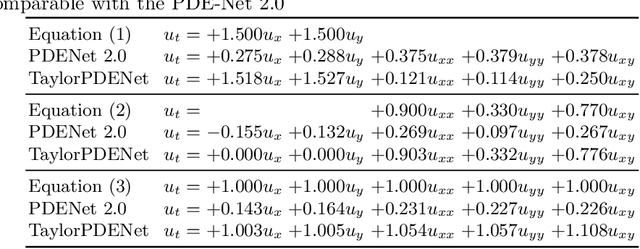Paul Heinisch
GrINd: Grid Interpolation Network for Scattered Observations
Mar 28, 2024Abstract:Predicting the evolution of spatiotemporal physical systems from sparse and scattered observational data poses a significant challenge in various scientific domains. Traditional methods rely on dense grid-structured data, limiting their applicability in scenarios with sparse observations. To address this challenge, we introduce GrINd (Grid Interpolation Network for Scattered Observations), a novel network architecture that leverages the high-performance of grid-based models by mapping scattered observations onto a high-resolution grid using a Fourier Interpolation Layer. In the high-resolution space, a NeuralPDE-class model predicts the system's state at future timepoints using differentiable ODE solvers and fully convolutional neural networks parametrizing the system's dynamics. We empirically evaluate GrINd on the DynaBench benchmark dataset, comprising six different physical systems observed at scattered locations, demonstrating its state-of-the-art performance compared to existing models. GrINd offers a promising approach for forecasting physical systems from sparse, scattered observational data, extending the applicability of deep learning methods to real-world scenarios with limited data availability.
TaylorPDENet: Learning PDEs from non-grid Data
Jun 26, 2023



Abstract:Modeling data obtained from dynamical systems has gained attention in recent years as a challenging task for machine learning models. Previous approaches assume the measurements to be distributed on a grid. However, for real-world applications like weather prediction, the observations are taken from arbitrary locations within the spatial domain. In this paper, we propose TaylorPDENet - a novel machine learning method that is designed to overcome this challenge. Our algorithm uses the multidimensional Taylor expansion of a dynamical system at each observation point to estimate the spatial derivatives to perform predictions. TaylorPDENet is able to accomplish two objectives simultaneously: accurately forecast the evolution of a complex dynamical system and explicitly reconstruct the underlying differential equation describing the system. We evaluate our model on a variety of advection-diffusion equations with different parameters and show that it performs similarly to equivalent approaches on grid-structured data while being able to process unstructured data as well.
 Add to Chrome
Add to Chrome Add to Firefox
Add to Firefox Add to Edge
Add to Edge